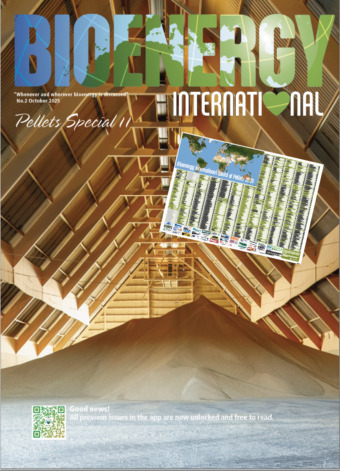The Austrian Biomass Association (Österreichischer Biomasseverband), with support from Austria’s Federal Ministry for Agriculture, Forestry, Regions, and Water Management, has published an in-depth analysis of the current state of Austria’s forests while addressing common prejudices against active forest management and bioenergy use.
The publication “Active Forest Conversion: Use Wood, protect the Climate” shows that wood stocks in Austria are among the highest in the world, not despite but because of sustainable forest management (SFM), and that there is little room to increase stocks much further.
Furthermore, with their long lifespans, forests in Austria and elsewhere are particularly affected by climate change and are too slow to adapt to its impact.
“Active Forest Conversion”
The report explores how forest management is closely affected by climate change and the role of bioenergy within this context, outlining the growing threats to Austria’s forests due to rising temperatures, droughts, and extreme weather.

These changes, especially in eastern Austria, put current monocultural coniferous stands at elevated risk.
Many tree species cannot cope with rising temperatures and increasing drought. As a result, forest owners are transitioning to mixed stands with diverse species that better resist drought and heat.
With this in mind, implementing an “Active Forest Conversion” strategy could transform increasingly risky monocultural coniferous stands into climate-fit, structured, and species-rich mixed stands.
A complex scenario
The authors highlight the role and impact of the EU’s climate and biodiversity regulations on forest management and the importance of bioenergy in reaching the EU’s climate targets.
In this context, bioenergy plays a critical role in meeting the EU’s renewable energy targets, accounting for 56 percent of its renewable energy supply, and is an essential component in achieving climate goals.

However, the authors note that the “bureaucratic requirements from Brussels”, such as those found in the EU Biodiversity Strategy, the Renewable Energy Directive (RED III), the Deforestation Regulation (EUDR), and the Nature Restoration Law, hinder more than help such a strategy.
Reducing wood removals by restricting usage to focus on building up maximum carbon stocks in the forest should be “considered a high-risk strategy”, the authors argue – a “use-it-or-lose-it” scenario.
Dense old forests with high wood stocks are increasingly threatened by climate change and the risk of collapse due to insect pests, windthrow, or forest fires.
In that way, they can dramatically change from a carbon sink to a net source of carbon dioxide (CO2) emissions
Carbon storage and fossil substitution with wood

The report underscores the importance of using wood in construction and bioenergy to store carbon and reduce reliance on fossil fuels respectively.
In Austria, bioenergy production exceeds consumption.
Woody biomass, such as fuelwood, woodchips, bark, and pellets, generates almost 40 percent of domestic energy and meets more than 14 percent of the country’s total energy demand.
In Austria, these substitution effects are higher than the carbon sink formed by the forest and the stock of wood products.
Protecting the climate
The link between bioenergy and climate protection is a central theme. Wood energy is climate-neutral when forests are managed sustainably.
In well-managed forests, a small portion of trees is harvested each year. The remaining trees continue growing and absorbing carbon dioxide (CO2).
Thinning and harvesting are carefully planned to align with natural regrowth, ensuring the forest replaces the harvested biomass over time.
If wood stocks remain stable or increase, as observed in many forests, there is no long-term carbon debt associated with using wood for energy.



